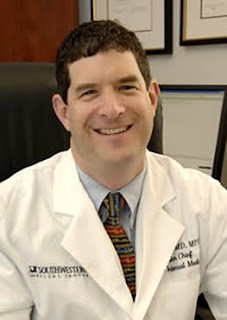Birmingham was a real victory, but a costly one. The long-term solution could not be for African Americans to defeat segregation one city at a time or by absorbing beatings, dog bites, and hosings. Even as the civil rights movement scored real gains, each advance came over dogged opposition. Federal troops were needed to ensure the admission of James Meredith, the first black to study at the University of Mississippi, in 1962. The following year, Alabama’s governor, George Wallace, whose inaugural address promised “segregation now, segregation tomorrow, segregation forever,” staged a “stand in the schoolhouse door.” Only the intervention of federal marshals ensured the enrollment of African Americans Vivian Malone and James Hood at the University of Alabama. The very next day, Medgar Evers, leader of the Mississippi NAACP, was murdered outside his home in Jackson. And in Birmingham itself, on September 15, 1963, three Klansmen planted 19 sticks of dynamite in the basement of the Sixteenth Street Baptist Church, the unofficial headquarters of the Birmingham movement. Four young girls — Addie Mae Collins, Carole Robertson, Cynthia Wesley, and Denise McNair — were killed and 22 injured.
On June 11, 1963, President John F. Kennedy told the nation that he would submit to Congress legislation prohibiting segregation in all privately owned facilities: hotels, restaurants, theaters, retail stores, and the like. “We are confronted primarily,” the president said, “with a moral issue. It is as old as the scriptures and as clear as the American Constitution.” But the obstacles to passage of effective civil rights laws remained imposing.
 Civil Rights March on Washington, D.C. [Roy Wilkins, Executive Secretary of the National Association for the Advancement of Colored People; A. Philip Randolph, organizer of the demonstration and veteran labor leader who helped to found the Brotherhood of Sleeping Car Porters, American Federation of Labor (AFL), and a former vice president of the American Federation of Labor and Congress of Industrial Organizations (AFL-CIO); and Walter P. Reuther, President of the United Automobile Workers Union and Vice President of the American Federation of Labor and Congress of Industrial Organizations, leading marchers down the street.]  Civil Rights March on Washington, D.C. [Leaders marching from the Washington Monument to the Lincoln Memorial. In the front row, from left are: Whitney M. Young, Jr., Executive Director of the National Urban League; Roy Wilkins, Executive Secretary of the National Association for the Advancement of Colored People; A. Philip Randolph, Brotherhood of Sleeping Car Porters, American Federation of Labor (AFL), and a former vice president of the American Federation of Labor and Congress of Industrial Organizations (AFL-CIO); Walter P. Reuther, President, United Auto Workers Union; and Arnold Aronson, Secretary of the Leadership Conference on Civil Rights.]  Civil Rights March on Washington, D.C. [Crowd of marchers at the Lincoln Memorial.], 08/28/1963  Civil Rights March on Washington, D.C. [Young women at the march.], 08/28/1963  Civil Rights March on Washington, D.C. [Close-up view of a crowd at the march.], 08/28/1963  Civil Rights March on Washington, D.C. [A crowd of marchers.], 08/28/1963 | A number of black leaders were determined to change the political reality in which members of Congress would consider civil rights legislation. One was A. Philip Randolph. Now well into his 70s, Randolph had earlier organized and for decades led the Brotherhood of Sleeping Car Porters union. African Americans had long supplied large numbers of rail car attendants. These were among the best jobs open to blacks in much of the country, and Randolph, as leader of these porters, had emerged as an important figure in the American labor movement. Back in 1941, President Franklin D. Roosevelt had sought to boost defense production in anticipation of possible U.S. entry into the Second World War. Randolph confronted Roosevelt, demanding an end to segregation in federal government agencies and among defense contractors. Otherwise, Randolph warned, he would launch a massive protest march on Washington, D.C. Roosevelt soon issued an executive order barring discrimination in defense industries and federal bureaus and creating the Fair Employment Practices Committee. After the war, pressure from Randolph contributed to President Harry S Truman’s 1948 order desegregating the American armed forces. Now Randolph and his talented assistant Bayard Rustin contemplated a similar march, hoping “to embody in one gesture civil rights as well as national economic demands.” A “Big Six” group of civil rights leaders was formed to organize the event. Included were Randolph, King, Roy Wilkins (representing the National Association for the Advancement of Colored People), James Farmer (Congress of Racial Equality), John Lewis (Student Nonviolent Coordinating Committee), and Whitney Young Jr. (Urban League). They fixed a date: August 28, 1963, and site for the main rally: the Lincoln Memorial in Washington, D.C. The “March on Washington for Jobs and Freedom” would be the largest political demonstration the nation had ever seen. Chartered buses and trains carried participants from throughout the nation. A quarter-million Americans, and by some estimates even more, gathered that day, among them at least 50,000 whites. On the podium stood a stellar assemblage of civil rights champions, Christian and Jewish religious leaders, labor chiefs, and entertainers. The black contralto Marian Anderson, who had performed at the Lincoln Memorial in 1939 after being refused permission to sing at Washington’s Constitution Hall, offered the national anthem. Each of the Big Six addressed the crowd that day, except for Farmer, who had been arrested during a protest in Louisiana. The best-remembered moment would be King’s. Considered by many the finest oration ever delivered by an American, King’s “I Have a Dream” speech drew on themes from the Bible and from such iconic American texts as the Constitution, the Declaration of Independence, and Abraham Lincoln’s Gettysburg Address. King organized his remarks in the style and structure of a sermon, the kind he had delivered at many a Sunday morning church service. The speech began by linking the civil rights cause to earlier promises unfulfilled. Lincoln’s Emancipation Proclamation, King said, appeared to the freed slaves as “a joyous daybreak to end the long night of their captivity.” But 100 years later, he continued, “the Negro … finds himself an exile in his own land.” When the nation’s founders wrote the Declaration of Independence and the Constitution, “they were signing a promissory note to which every American was to fall heir. This note was a promise that all men, yes, black men as well as white men, would be guaranteed the ‘unalienable rights’ of ‘life, liberty, and the pursuit of happiness.’ ” America, King continued, had defaulted on that promissory note, at least to her citizens of color. We refuse to believe that the bank of justice is bankrupt. We refuse to believe that there are insufficient funds in the great vaults of opportunity of this nation. And so, we’ve come to cash this check, a check that will give us upon demand the riches of freedom and the security of justice. “There will be neither rest nor tranquility in America until the Negro is granted his citizenship rights,” King warned, but he also noted that in the process of gaining our rightful place, we must not be guilty of wrongful deeds. Let us not seek to satisfy our thirst for freedom by drinking from the cup of bitterness and hatred. We must forever conduct our struggle on the high plane of dignity and discipline. We must not allow our creative protest to degenerate into physical violence. Some believe that King spoke extemporaneously as he delivered the “dream” portion of his address. The famed gospel singer Mahalia Jackson was on the stage while King spoke, and she addressed him during the speech: “Tell them about the dream, Martin,” she said. And he did. … and so even though we face the difficulties of today and tomorrow, I still have a dream. It is a dream deeply rooted in the American dream. I have a dream that one day this nation will rise up and live out the true meaning of its creed: “We hold these truths to be self-evident, that all men are created equal.” I have a dream that one day on the red hills of Georgia, the sons of former slaves and the sons of former slave owners will be able to sit down together at the table of brotherhood. I have a dream that one day even the state of Mississippi, a state sweltering with the heat of injustice, sweltering with the heat of oppression, will be transformed into an oasis of freedom and justice. I have a dream that my four little children will one day live in a nation where they will not be judged by the color of their skin but by the content of their character. I have a dream today! As the words and images of the day’s events sped across the nation and around the world, momentum for real change accelerated. But there were battles still to be fought, and victory, while ever closer, still lay in the distance. This article is excerpted from the book Free At Last: The U.S. Civil Rights Movement, published by the Bureau of International Information Programs. View the entire book Free At Last (PDF, 3.6 MB). |




























